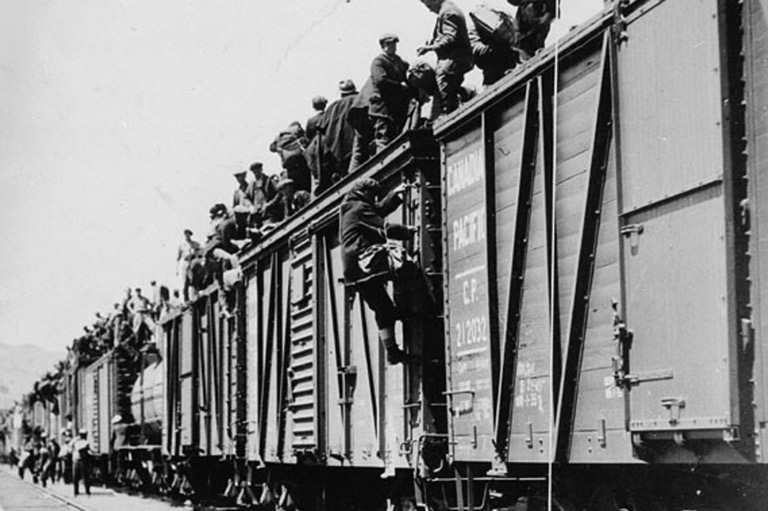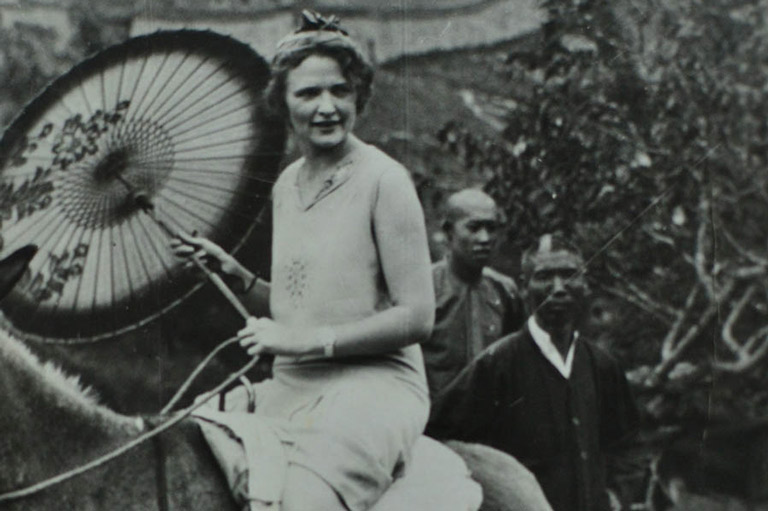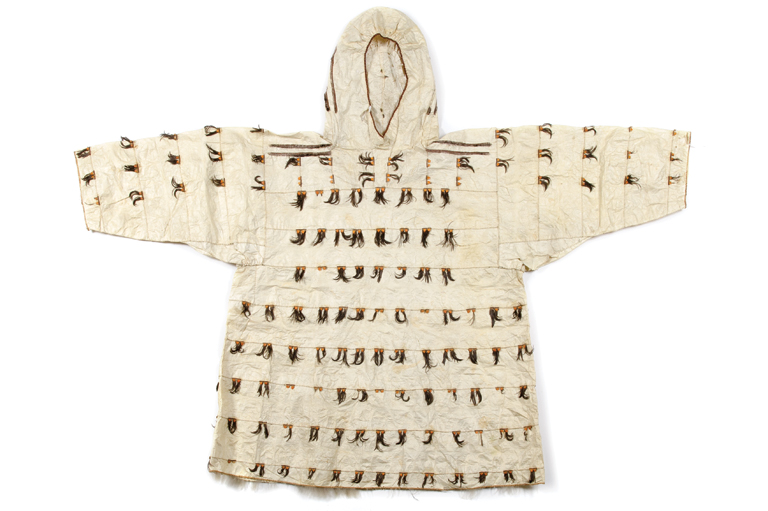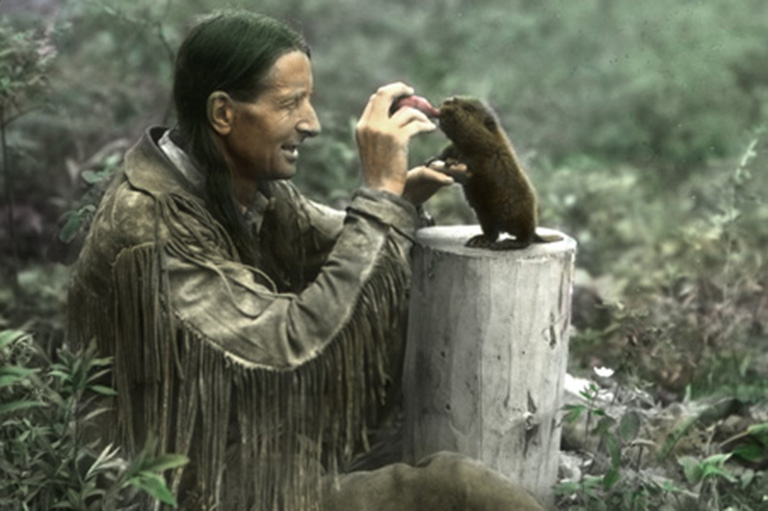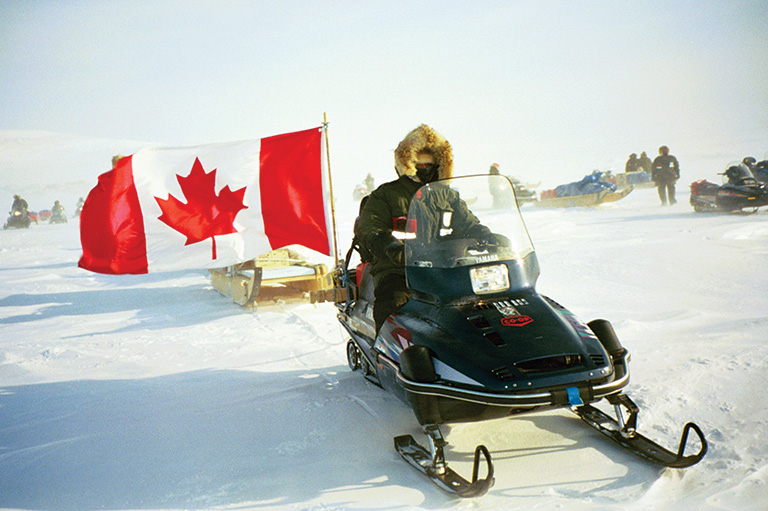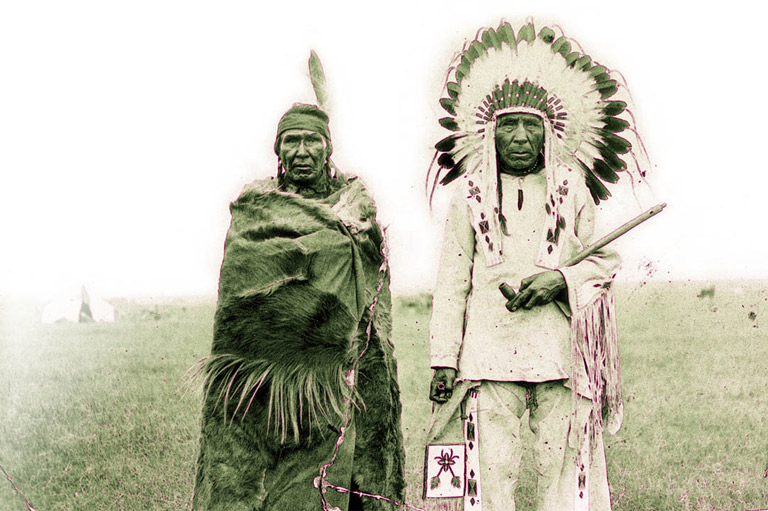The Big Chill
Giving a historical event a name — especially a catchy name — has its drawbacks. A name can give an event too defined a shape, solidify it while making it smaller, like water beading on a surface. So it is with the name given to 1816 — the Year Without a Summer.
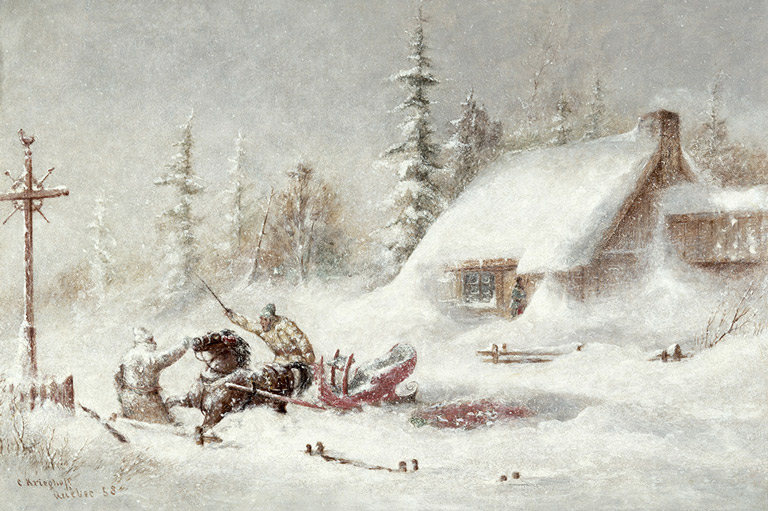
The Year Without a Summer refers to what followed the global impact of a volcanic eruption on the Indonesian island of Sumbawa. When Mount Tambora erupted in the spring of 1815, it spewed about fifty cubic kilometres of rock, ash, and dust high into the air. Some of the particles remained suspended in the atmosphere for months, even years, effectively blocking some of the sun’s heat. What was by far the largest eruption in recorded history had the effect of cooling the planet’s surface. This led to widespread crop failures around the world.
Hunger throughout Europe led to outbreaks of disease and food riots. Eastern North America also experienced intense bouts of cold weather in 1816, creating hardship for thousands of people. But the eruption’s impact was not restricted to one season, or even one year. Nor was the impact felt equally everywhere.
Because eastern Canada did not receive the worst of this cold — and maybe because we expect Canada to be cold — the year has never been thought to be particularly momentous here. A 1986 article in the Bulletin of the American Meteorological Society calls the nickname “Year Without Summer” a “gross exaggeration” in reference to Canada.
The newspapers, diaries, and government records of 1816 show that there was a summer that year, but they also show that British North Americans were affected greatly by wild weather patterns. What’s more, the focus on the conditions of 1816 has obscured the years that came before and after. Parts of Canada had already suffered several poor harvests in a row, so 1816’s bad weather threatened the colonies with extreme food shortages, making 1817 a year of deprivation for many.
The winter of 1816 was not particularly cold in eastern Canada, but the spring made up for it. Snow remained on the ground, and more fell, long into May. In some places, livestock began to starve from want of grass. Only at the end of the month did the backward season begin to relent. The Quebec Gazette of June 6 noted that the late frosts did not seem to have done farmers much harm: “A few fine days, and the present rains, have restored the young crops to all their former vigor.” But immediately below this article, the newspaper reported, “Most Extraordinary Weather”: a foot of snow had fallen in the city that very day.
It is this early June weather system for which 1816 is best known. Snow and cold swept deep into the eastern United States, doing greater damage the farther south they went, since crops were farther along and so more susceptible. But Canada certainly felt its effects, too. In Quebec City, ice “as thick as a dollar” killed vegetation. Trees shed their leaves. Newborn spring sheep and calves died from the cold. Flocks of migratory birds “dropped down dead in the streets,” according to the Gazette. In central New Brunswick, Tredway Thomas Odber Miles wrote in his diary on June 8, “Wonderful to behold. The snow covers the face of the earth one inch deep. Peas up in the garden but appear very much alarmed at the sight of snow.” Although the snow soon melted, the cold weather lasted a couple more weeks throughout most of British North America. A Halifax newspaper would later rate that June “a tolerable month of March.”
With 7 uniquely curated newsletters to choose from, we have something for everyone.
Further west in what is now Manitoba, settlement was only just beginning. The Selkirk Settlers arrived in the Red River Valley in 1812. They too experienced a colder than usual summer in 1816. Peter Fidler of the Hudson’s Bay Company at Brandon wrote of a severe cold spell that began on June 5. “A very sharp frost at night … killed all the Barley, Wheat, Oats and garden stuff above the ground except lettuce and onions — the Oak leaves just coming out are as if they are singed by fire and dead.” The following summer was also relatively cold, with killer frosts in July. The cold summers on the prairies ended in 1818, but a drought that accompanied them persisted until 1819.
In eastern Canada, the cold spell’s most profound, immediate impact was that the price of flour soared throughout the colonies. This was of great concern to a Canadian population that received about half of its calories from bread alone.
It was not merely that wheat is particularly susceptible to cold, and that the 1816 wheat harvest was thus now in doubt, but that the colonies had been banking on a good harvest after a run of bad ones. On July 15, the Quebec Gazette reported, “We are sorry to learn from unquestionable authority, that great distress prevails in many parishes throughout this province from a scarcity of food. Bread and milk is the common food of the poorer classes at this season of the year; but many of them have no bread; they support a miserable existence, by boiling wild herbs of different sorts, which they eat with their milk.”
Some locales reported a bright side to the weather, noting that the snow in June actually protected crops from the accompanying frost. The cold also killed destructive pests, in particular the Hessian fly, which had been a scourge on Canadian grain crops for the previous decade. Late June brought some hot days to eastern North America, which prompted Rev. Elias Scovil to deliver a sunny sermon to his Kingston, New Brunswick, congregation. “For the winter is past, the rain is over and gone,” he said, quoting from the Song of Solomon. “The flowers appear on the earth, the time of the singing of the birds is come, and the voice of the turtledove is heard in our land.”
With the exception of a cold snap in July, the weather for the rest of the year was actually quite seasonal.
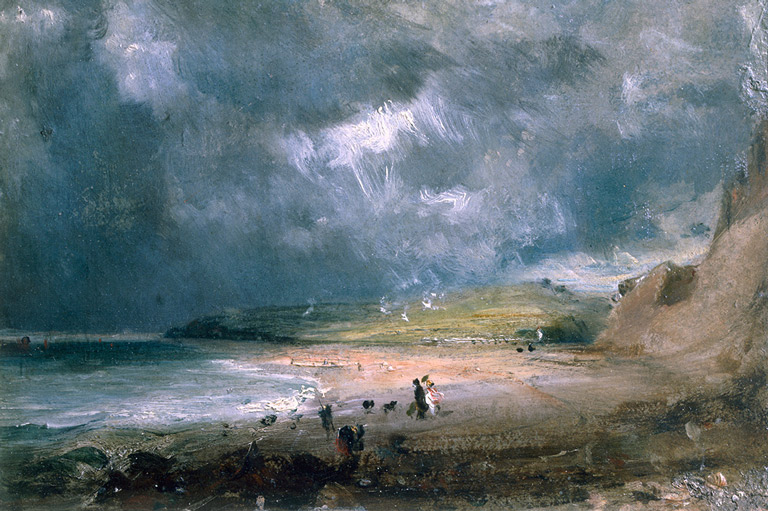
Reports from throughout the colonies agreed that, although it would be a bad year for hay and fruit in particular, the good quantity and/or quality of crops such as potatoes, peas, barley, oats, and, above all, wheat made up for it. The conditions held long enough that farmers in most places gathered an abundant harvest.
But the late spring had meant late planting, and late planting a late harvest, so severe frost at the end of September and snow in early October devastated crops still in the field across Lower Canada (Quebec) and New Brunswick. The St. Lawrence Valley below Quebec City was particularly hard hit.
Even those not yet experiencing hunger had every reason to anticipate it: The harvest was lost, food reserves were spent, and bread and fuel prices were high. Furthermore, poor labourers knew that there would be less work available in winter and that it typically paid a quarter to a half less than in summertime. Well before winter set in, the residents of the parishes outside Quebec called on the government for relief.
The year 1816 is known for its freakish June snows, but the winter weather of 1817 was far more meaningful. After a January and first half of February that were terrifically cold, winter held on right through to May. The St. Lawrence froze faster and farther downriver than it had in fifty years. The Nova Scotia Royal Gazette likewise reported that men had sleighed far into the Northumberland Strait “without seeing open water, a circumstance not within the memory of the oldest settler in the place.”
Amid this chill, and on the heels of meagre harvests, the poor of all the colonies experienced varying measures of what was universally called “distress.” As many as three thousand people in the suburbs of Montreal, twenty per cent of the population, were reported to be without food or fuel. There was alarming scarcity among the unfortunate of Halifax, with the threat of “robbery or starvation” sure to follow. The entire population of Newfoundland suffered from lack of food, punishing weather, and being completely cut off from the rest of the world. Found in the ashes of a St. John’s fire were forty barrels of potatoes that the owner had been selling on the black market at outrageous prices.
In Quebec City, an inquest was held into the death of a child, Maria Louisa Beleau, who with her mother and sisters lived in a hovel with bare earth floors, no windows, and a hole in the roof for a chimney, for those times when they could afford to build a fire. The jury found that she had died of “a violent sore throat, and cold, produced by exposure to the inclemency of the weather.”
Colonial governments had foreseen the looming food crisis and did what they could to prevent and prepare for it. As early as October 1816, Prince Edward Island Lieutenant-Governor C.D. Smith banned the export of agricultural products from the Island. The other colonies soon followed suit — all but Upper Canada (Ontario), which had largely escaped the bad harvests and whose wheat would be needed to feed the other colonies. This was as much interference in the market as some legislators would tolerate. When Lower Canada’s council was told that the people of Kamouraska had eaten the last of their cattle and were on the verge of starvation, the Speaker argued that at most an interest-free loan should be granted, that the region was in fact sufficiently well-off to buy food of its own.
Many believed that the poor should be made to work — one suggestion was to have them shovel snow into the streets to assist the sleighing. Yet it was generally understood that the most desperate were often in no position, physically or geographically, to travel for work and that, more to the point, wintertime unemployment and resultant deprivation had become an endemic part of Canadian society. In the crisis of the winter of 1817, governments focused on providing relief. Lower Canada, for example, distributed £15,000 (comparable to about $2 million today) worth of food and voted to lay out the same again. Newfoundland purchased more than 100,000 pounds of flour from the commissariat, the supply office for British forces in the colony. Relief also took the form of seed grain — Lower Canada set aside a loan fund for farmers purchasing seed.
What’s striking is that in newspapers and government debates no one blamed the distress on the weather of 1816 alone: Farming practices, the nature of colonial and international trade, structural poverty, and other factors were believed to have played their part. Lower Canada’s legislature declared it “a subject worthy of investigation, whether other circumstances than an unpropitious season have not had a share in producing the present scarcity….”
On the first of May, 1817, citizens of Quebec City rode out across the St. Lawrence River in carioles, carts, and sleighs and, as if to summon the end of a seemingly endless winter, planted maypoles in the ice. They were successful, apparently; the ice finally broke up three days later. Twenty vessels from Montreal soon appeared, laden with seed grain for the distressed eastern end of the colony. Good weather came and stayed all that summer across the British North American colonies. “A finer season for seed time and crops generally never was known,” Governor General Earl Dalhousie would say that fall, while in Nova Scotia. “All Canada, as well as this Province, rejoices in the prospects we have at present.”
Yet not all locales fared equally well. Parts of Upper Canada, having missed the worst of the 1816 weather, lost crops to rust disease and frost in the fall of 1817. St. John’s, Newfoundland, still suffering, was hit first by fire that fall and then by the coldest winter on record. Tambora’s severe effect on British North America’s weather only began to dissipate in 1818.
The post-Tambora period could be more accurately called “the years without,” or, better still, “the years without, for some.” Of course, at some point, a too-inclusive name loses not just catchiness but meaning. Pulling apart the perceived simplicity of this moment in climate history can be a valuable reminder that climate has never been singular; it has never meant a single weather experienced in all places by all people.
And, as in the past, so in the future: “Climate change” (let alone “global warming”) is far too simple a term for what we have to look forward to.
At Canada’s History, we highlight our nation’s past by telling stories that illuminate the people, places, and events that unite us as Canadians, while understanding that diverse past experiences can shape multiple perceptions of our history.
Canada’s History is a registered charity. Generous contributions from readers like you help us explore and celebrate Canada’s diverse stories and make them accessible to all through our free online content.
Please donate to Canada’s History today. Thank you!
Themes associated with this article
Advertisement
More from this issue...

Canada’s History Archive, featuring The Beaver, is now available for your browsing and searching pleasure!

